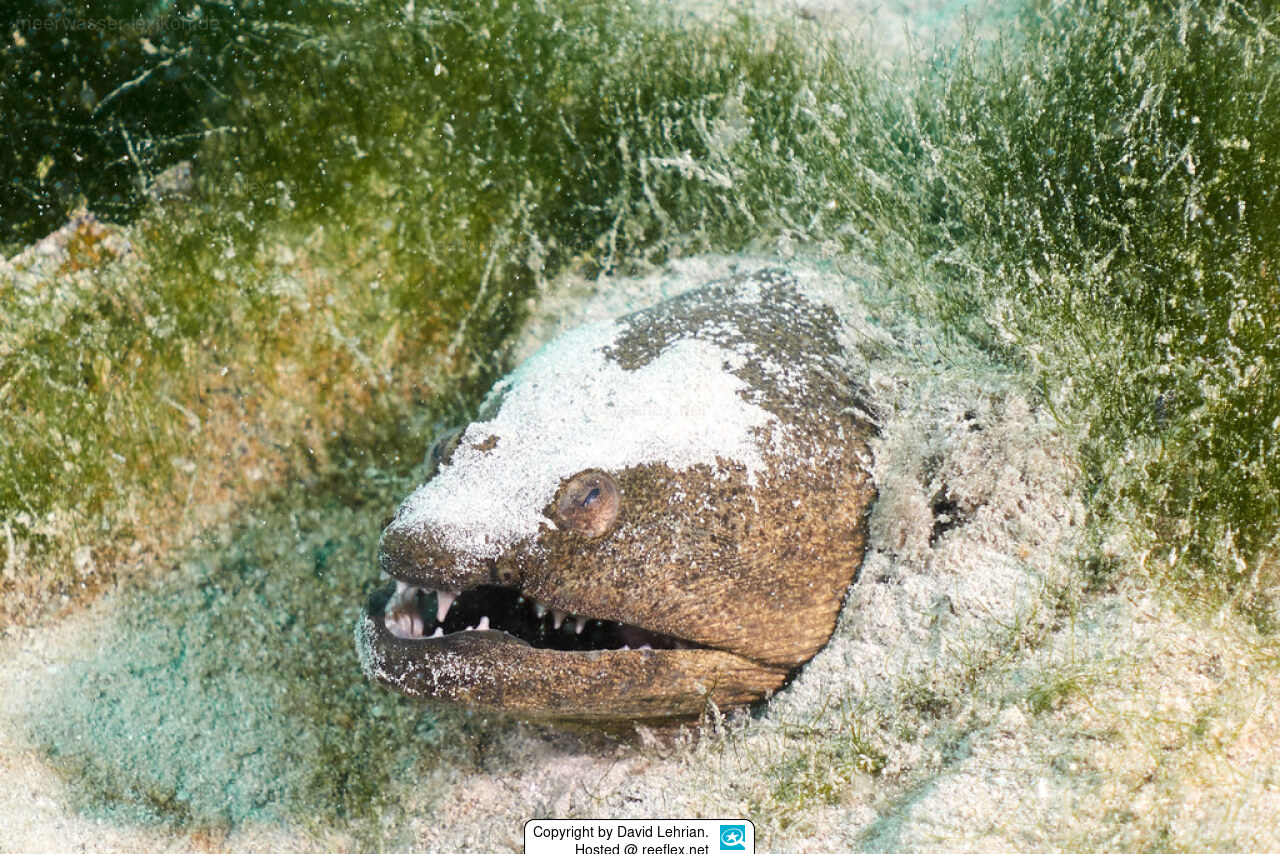Info
Echiophis punctifer (Kaup, 1859)
Echiophis punctifer is a snake eel from the family Ophichthidae. The spotted spoon-nosed snake eel was described by Johann Jakob Kaup in 1859. It is a tropical sea eel native to the western and eastern Atlantic, including the Gulf of Mexico, Cuba, northern South America, Senegal and Angola.
It usually lives at a depth of up to 193m, but can also be found in shallow bays and lagoons, where it builds burrows in mud and sand. Males can reach a maximum size of 180 cm, but usually remain significantly smaller at 100 cm.
Echiophis punctifer has a cylindrical, stout body, with the tail accounting for 52–57% of the animal's total length. the mouth is short and conical, the jaws are almost the same length, the lips are barbelless and the eyes are located forward and near the top of the head profile. The sharp, strong teeth are arranged in double rows. The largest teeth are in the front.
The general body color is beige-brownish. A brown stripe runs along each side of the base of the dorsal fin, a reddish-brown stripe along the base of the anal fin, numerous small, eye-sized spots in 6–8 indistinct rows along the body, and smaller, more numerous spots are on the head. The anal fin has a distinctive black edge.
The species name “punctifer” is Latin for “dotted”. The snake eel has a pink color and small dots, similar to a leopard pattern.
Synonymised names:
Conger mordax Poey, 1860 · unaccepted
Crotalopsis punctifer Kaup, 1859 · unaccepted
Echiophis creutzbergi (Cadenat, 1956) · unaccepted
Echiophis mordax (Poey, 1860) · unaccepted
Mystriophis creutzbergi Cadenat, 1956 · unaccepted (synonym)
Mystriophis punctifer (Kaup, 1859) · unaccepted
Ophichthys schneideri Steindachner, 1879 · unaccepted
Echiophis punctifer is a snake eel from the family Ophichthidae. The spotted spoon-nosed snake eel was described by Johann Jakob Kaup in 1859. It is a tropical sea eel native to the western and eastern Atlantic, including the Gulf of Mexico, Cuba, northern South America, Senegal and Angola.
It usually lives at a depth of up to 193m, but can also be found in shallow bays and lagoons, where it builds burrows in mud and sand. Males can reach a maximum size of 180 cm, but usually remain significantly smaller at 100 cm.
Echiophis punctifer has a cylindrical, stout body, with the tail accounting for 52–57% of the animal's total length. the mouth is short and conical, the jaws are almost the same length, the lips are barbelless and the eyes are located forward and near the top of the head profile. The sharp, strong teeth are arranged in double rows. The largest teeth are in the front.
The general body color is beige-brownish. A brown stripe runs along each side of the base of the dorsal fin, a reddish-brown stripe along the base of the anal fin, numerous small, eye-sized spots in 6–8 indistinct rows along the body, and smaller, more numerous spots are on the head. The anal fin has a distinctive black edge.
The species name “punctifer” is Latin for “dotted”. The snake eel has a pink color and small dots, similar to a leopard pattern.
Synonymised names:
Conger mordax Poey, 1860 · unaccepted
Crotalopsis punctifer Kaup, 1859 · unaccepted
Echiophis creutzbergi (Cadenat, 1956) · unaccepted
Echiophis mordax (Poey, 1860) · unaccepted
Mystriophis creutzbergi Cadenat, 1956 · unaccepted (synonym)
Mystriophis punctifer (Kaup, 1859) · unaccepted
Ophichthys schneideri Steindachner, 1879 · unaccepted







 David Lehrian
David Lehrian


